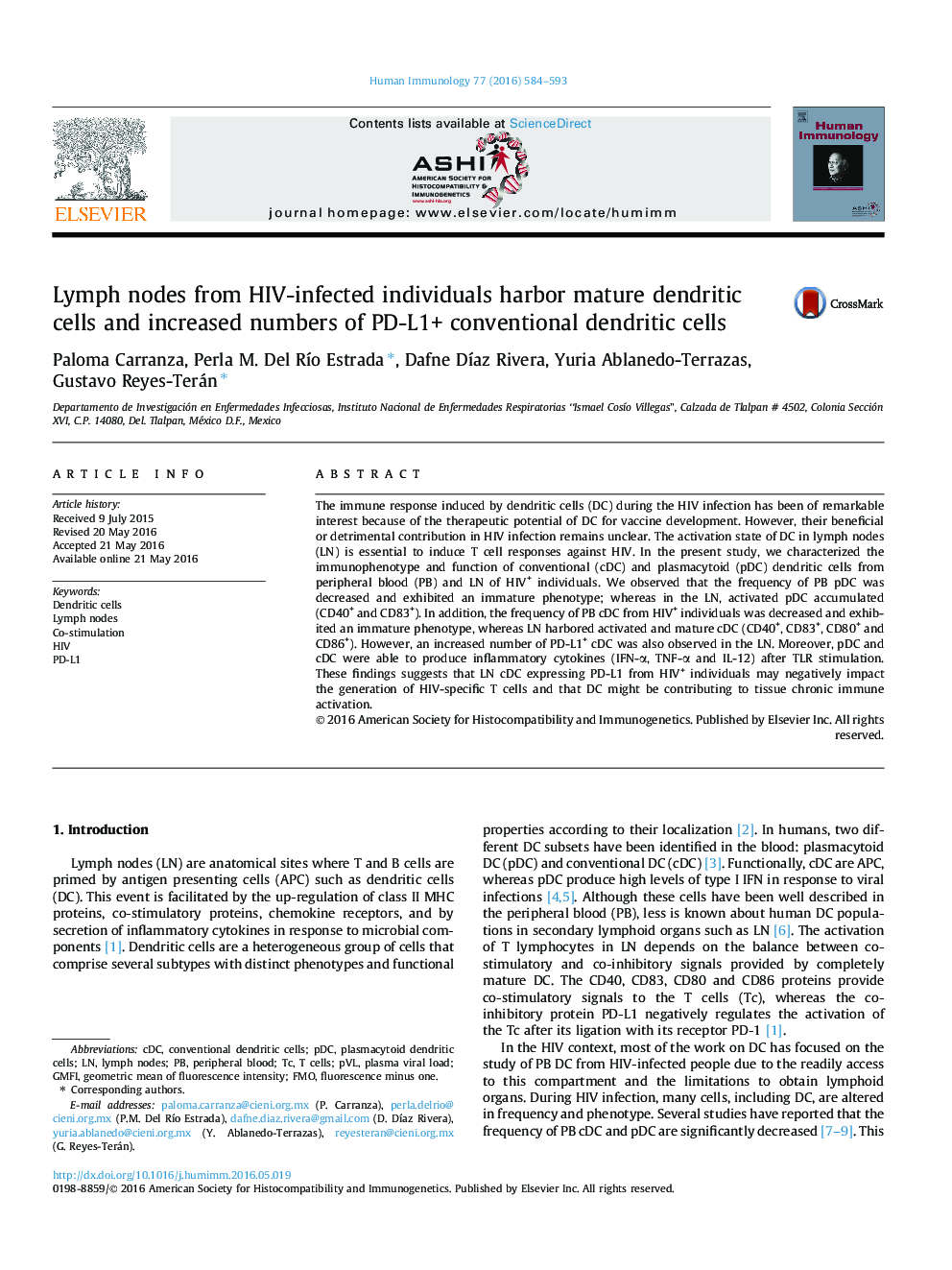| Article ID | Journal | Published Year | Pages | File Type |
|---|---|---|---|---|
| 3349500 | Human Immunology | 2016 | 10 Pages |
The immune response induced by dendritic cells (DC) during the HIV infection has been of remarkable interest because of the therapeutic potential of DC for vaccine development. However, their beneficial or detrimental contribution in HIV infection remains unclear. The activation state of DC in lymph nodes (LN) is essential to induce T cell responses against HIV. In the present study, we characterized the immunophenotype and function of conventional (cDC) and plasmacytoid (pDC) dendritic cells from peripheral blood (PB) and LN of HIV+ individuals. We observed that the frequency of PB pDC was decreased and exhibited an immature phenotype; whereas in the LN, activated pDC accumulated (CD40+ and CD83+). In addition, the frequency of PB cDC from HIV+ individuals was decreased and exhibited an immature phenotype, whereas LN harbored activated and mature cDC (CD40+, CD83+, CD80+ and CD86+). However, an increased number of PD-L1+ cDC was also observed in the LN. Moreover, pDC and cDC were able to produce inflammatory cytokines (IFN-α, TNF-α and IL-12) after TLR stimulation. These findings suggests that LN cDC expressing PD-L1 from HIV+ individuals may negatively impact the generation of HIV-specific T cells and that DC might be contributing to tissue chronic immune activation.
